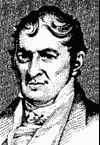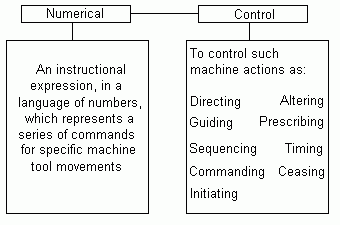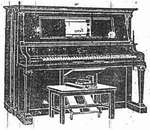www.wimb.net - Numerical Control History
Time Line for NC
1725
Knitting machines in England controlled by punched cards
1863
M. Fourneaux - made the first automatic player piano operating with forced air through perforated rolls of paper.
1870-1890
Eli Whitney development of jigs and fixtures
American system of interchangeable parts manufacture
Info Link

Eli Whitney's jigs and fixtures
1880
Introduction of a variety of special tools for metals machining Beginning emphasis on mass production
Introduction
Numerical control is a technique involving coded, numerical instructions for the automatic control and performance of a machine tool. It is a method of controlling machine tool movements with the aid of a number language. The number language is usually applied to a piece of tape in the form of machine-punched holes.
The punched tape is the precise input medium used to control moving members of a machine tool "automatically" as opposed to "manually". Organized numerical information properly placed on an input medium, usually tape, functions as a series of sequenced machine tool operating commands. The operating commands are executed automatically with amazing speed, accuracy, efficiency, and repeatability.
The relationship between the words "numerical" and "control" is shown graphically below.

Finally, numerical control is an integral part of automation in the industrial technology as we know it today. Numerical control is commonly abbreviated as "N/C" or "NC"
How it Begun
The evolution of machine tools began in the first days of the Industrial Revolution. As early as 1725, knitting machines in England were controlled with punched cards. The patterns in cloth were woven according to a pre-punched set of cards that directed the weaving machine. Earlier still, rotating drums with pre-positioned pins were used to control chimes in the cathedrals of Europe and in some American churches. Music boxes operating on the same principle became popular shortly thereafter.
 In 1863 M. Fourneaux patented the first automatic player piano. This used the principle of air passing through a perforated roll of paper, which in turn, actuated the piano keys. This method was improved to the point where the roll perforations were able to control tone, sound intensity and roll speed.
In 1863 M. Fourneaux patented the first automatic player piano. This used the principle of air passing through a perforated roll of paper, which in turn, actuated the piano keys. This method was improved to the point where the roll perforations were able to control tone, sound intensity and roll speed.
The "American System of Interchangeable Parts Manufacture" and the principle of mass production were ushered in by such developments as Eli Whitney's jigs and fixtures, and the development of a milling machine by which operations and control functions were transferred from the skilled handicraftsmen to the machine tool. In time, significant improvements in the precise operation of these machine tools were achieved.
This system was soon universally adopted by industry and has made it possible to produce large quantities of identical parts. Each of the parts produced by this process is so precisely like the others that any one part may be used in the assembly of the final product. This system was first used in making muskets and revolvers. The method was extended in the first half of the 19th century to the making of clocks, farm machinery, sewing machines, and other durable goods.
Updated 2007 Oct. 09


